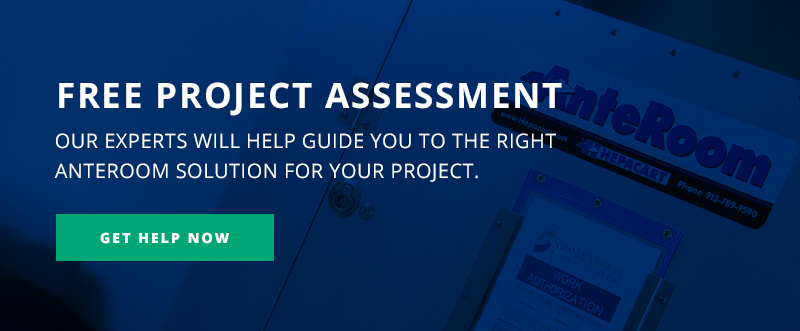Share this
3 Dust Containment Solutions for Class IV Construction Projects
by HEPACART on Nov 13, 2018
When doing maintenance or construction in healthcare facilities, the danger of spreading dangerous materials is heightened. To protect patients from dangerous pathogens, special precautions need to be taken in to avoid any accidents. Infection control solutions are key to ensuring that there is minimal pathogen spread to the healthcare environment while completing complicated Class IV construction projects.
Class IV projects are projects that are classified by the ICRA matrix as extremely involved maintenance or construction. Class IV projects can also be projects in which pathogens from the worksite could impact high-risk patients.
There are several precautions when working in a Class IV project, listed on the ICRA Matrix, for what is required for working Class IV projects:
- Isolation of local HVAC system to prevent contamination of duct system.
- Putting barriers in place to seal the work area off from the non-work area.
- Maintaining negative air pressure within the construction area with HEPA filtration units.
- Sealing any holes, pipes, conduits or punctures openings into the non-work area.
- Putting in place an anteroom where all personnel must pass through and be vacuumed by a HEPA vacuum cleaner. Alternatively, workers can wear cloth or paper coveralls that are removed upon leaving the worksite.
- All personnel must wear shoe covers within the worksite, and those covers must be changed each time someone leaves the work area.
- All safety barriers must stay in place until the completed project has passed inspection by the facility Safety Department and Infection Control Department. Barriers must also be thoroughly cleaned prior to break down.
In addition, there are several procedures that are required to be completed after construction:
- Do not remove barriers from work area until completed project is inspected by the owner’s Safety Department and Infection Prevention & Control Department and thoroughly cleaned by the owner’s Environmental Services Dept.
- Removing barrier material carefully to minimize spreading of dirt and debris associated with construction.
- Containing construction waste before transport in tightly covered containers.
- Covering transport receptacles or carts. Tape covering unless lid is solid.
- Vacuuming work area with HEPA filtered vacuums.
- Wetting mop area with cleaner/disinfectant.
- Upon completion, restoring HVAC system where work was performed.
Ensuring that precautions are met both during and after construction is key to performing in Class IV projects. There are three major tools to provide for solutions for infection control.
Dust Containment Cart
If your Class IV project requires ceiling access, a dust containment cart can be an incredibly useful tool for infection control. The containment unit, also known as a control cube, can be entirely enclosed so that pathogens that travel in dust cannot escape from the construction zone to patient areas. The dust containment cart improves worker safety as well by providing better quality air for people working in the construction area. Dust containment carts can also be equipped with both negative air machines and HEPA filtration, so both negative air machines and dust containment carts work together to prevent infection spread.
Negative Air Machine
A negative air machine is critical to maintaining negative air pressure in work areas. When the pressure within the workspace is negative, pathogens and other infectious particles cannot escape the construction zone and spread into nearby patient areas. Instead, the particles are forced through a HEPA filtration system and the filtered air is then exhausted to a part of the facility away from the work area. The machine ensures that hourly air changes are monitored and clean air is circulated within the isolated construction environment. As long as the HEPA filters are properly maintained, a negative air machine provides an invaluable tool for infection control.
AnteRoom
One of the best ways to prevent any contamination of pathogens to hospital patient areas is by setting up an AnteRoom. This keeps the work and hospital areas separated by creating an external passageway that ensures the air from the work area is kept away from other areas within the facility. The AnteRoom meets all Class IV project requirement by providing air filtration through attached Negative Air Machines, dust collection, and infection control. The HEPACART AnteRoom requires no additional construction or additional disposal of materials. The AnteRoom provides the most encompassing solution to infection control.
As with all projects, the priority of Class IV projects is the safety of both workers and patients in the facility. Infection control is the key way in which this priority is met, and the tools listed are essential in combating the spread of pathogens. If you think an AnteRoom might be the right choice for your next project, use our AnteRoom project assessment form to find the correct solution.
More reading:
